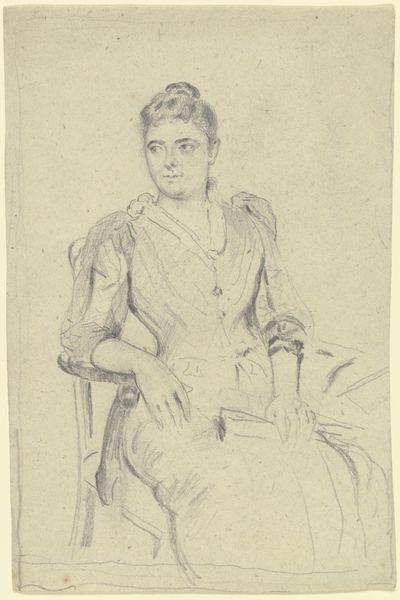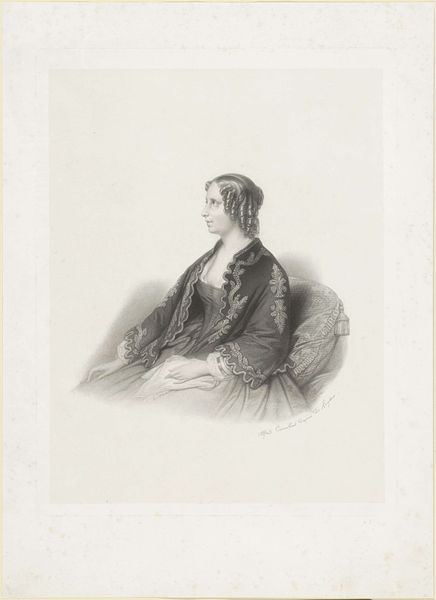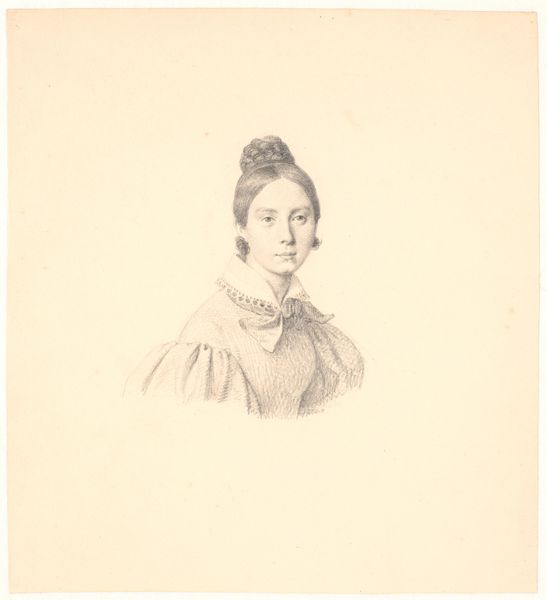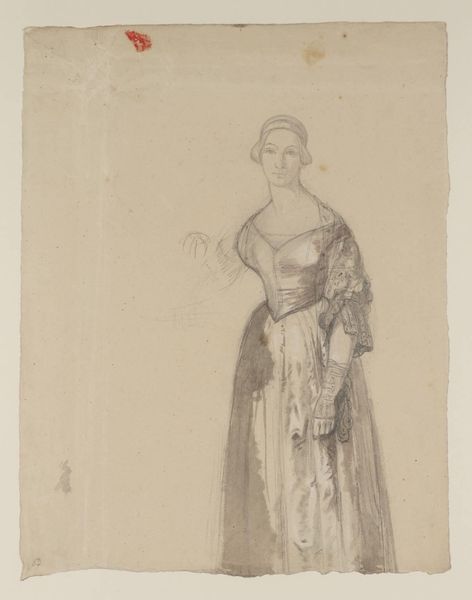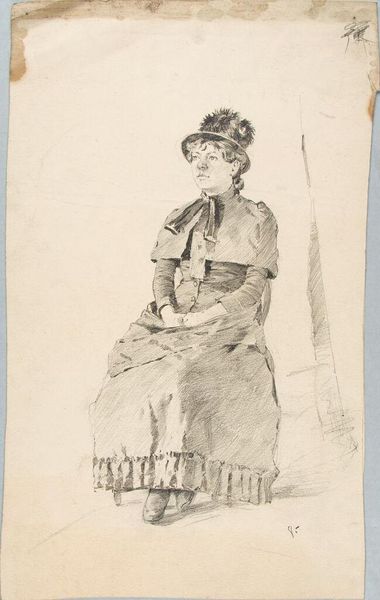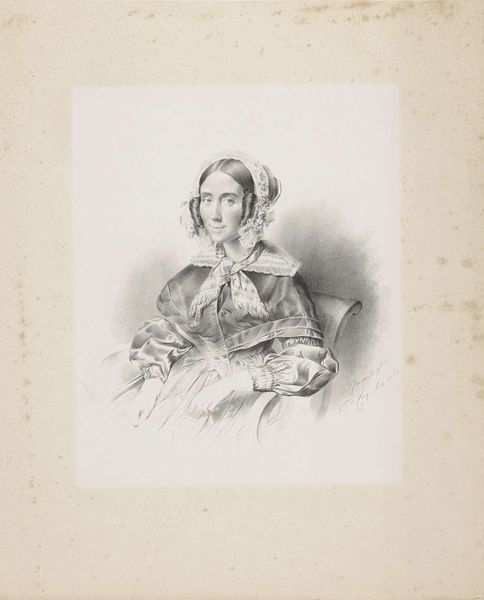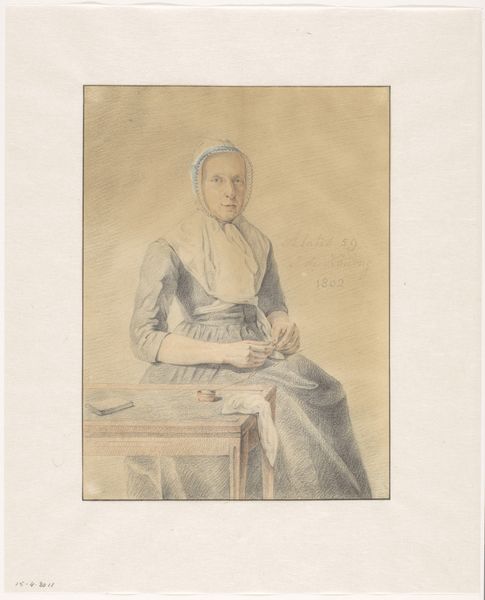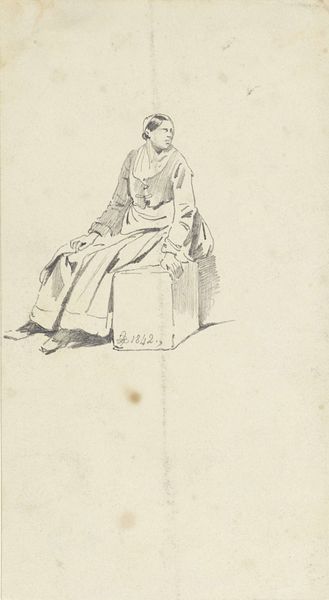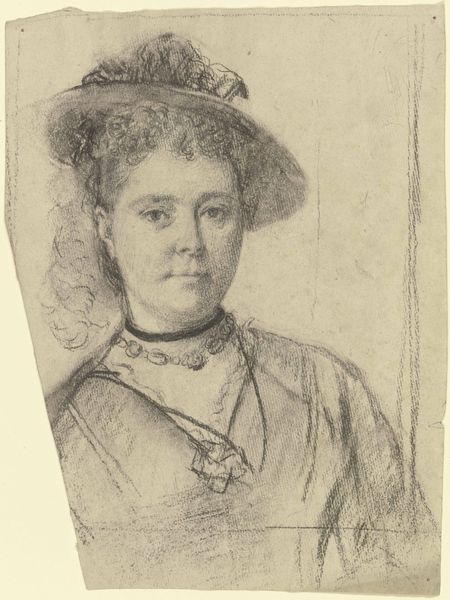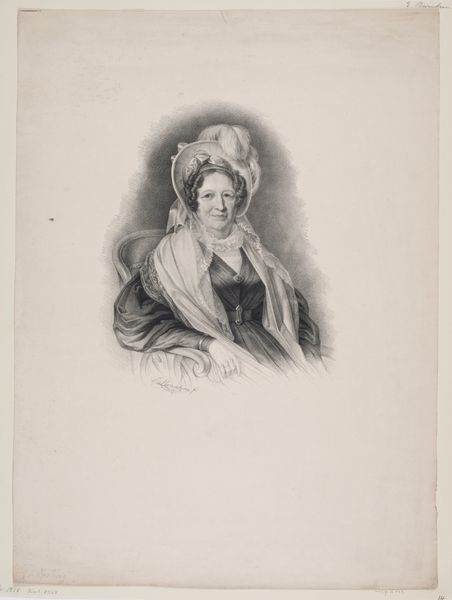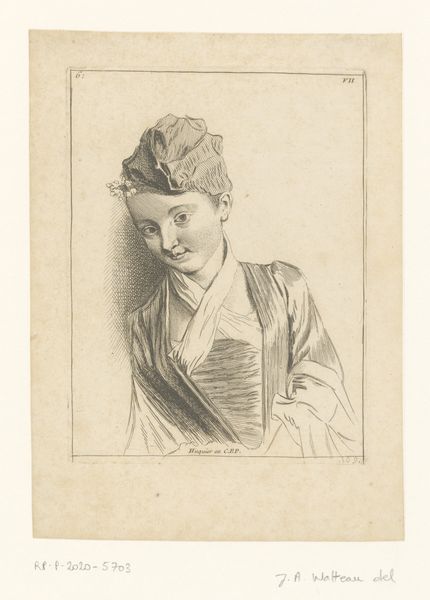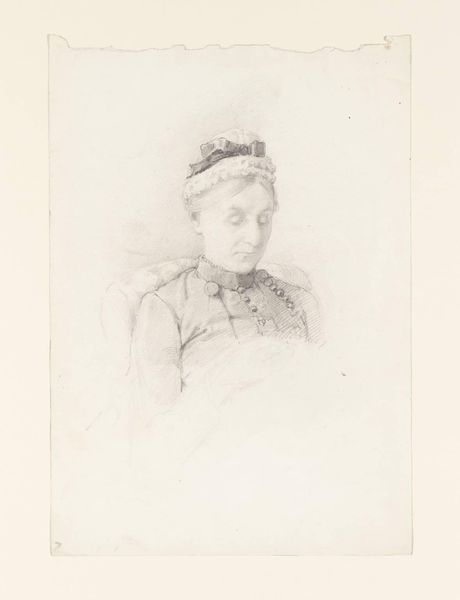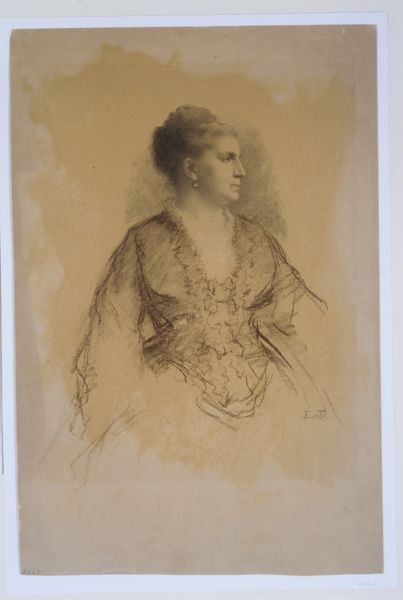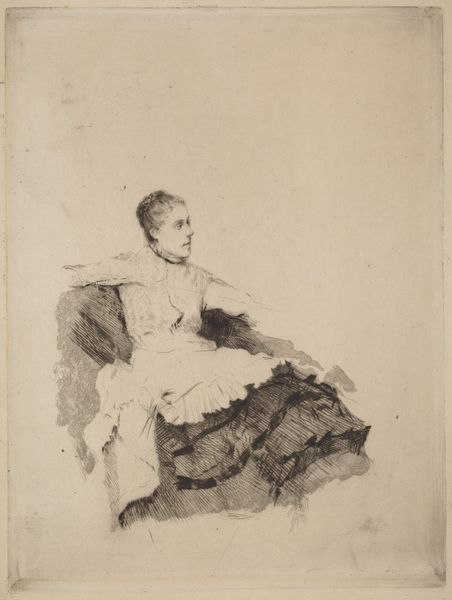
drawing, print, etching, pencil
#
portrait
#
drawing
# print
#
etching
#
pencil drawing
#
pencil
#
genre-painting
#
academic-art
#
realism
Dimensions: 226 mm (height) x 178 mm (width) (bladmaal), 178 mm (height) x 130 mm (width) (plademaal)
Editor: Here we have Carl Bloch's 1882 etching, "Portrait of Alma Bloch," held at the SMK in Copenhagen. There’s a quiet intensity to this work, and I’m really struck by the detail in her dress despite the lightness of the etching. What stands out to you? Curator: It's compelling to consider this portrait within the context of late 19th-century Denmark. Bloch, known for his religious paintings, here offers a domestic scene. Alma's reserved posture and attire speak volumes about societal expectations for women of that era. How do you think the etching medium influences our understanding of Alma’s representation? Editor: That’s a great question. The delicacy of the etching almost makes her seem fragile, which plays into those gender expectations, doesn’t it? Curator: Precisely. The very act of depicting a woman, likely of the middle class, contributes to an ongoing discussion about gender roles and representation in art. Think about the male gaze, the power dynamics at play in portraiture, and the way women were often objectified. Does Alma meet that expectation here, or is there something resisting it? Editor: I think the subtlety does resist it, to a degree. There's a quiet strength in her gaze. And perhaps the incompleteness of the etching…the lack of vivid colour prevents complete objectification? Curator: Yes, and we must also consider Bloch’s position. What impact might it have on his depiction that Alma may have been a relative? How does the potential personal relationship change the narrative of artist and model? Editor: It’s amazing how much context adds to the interpretation. I’ll never look at a portrait the same way again. Curator: Exactly! By understanding the social fabric in which art is made, we enrich our interpretation.
Comments
No comments
Be the first to comment and join the conversation on the ultimate creative platform.
